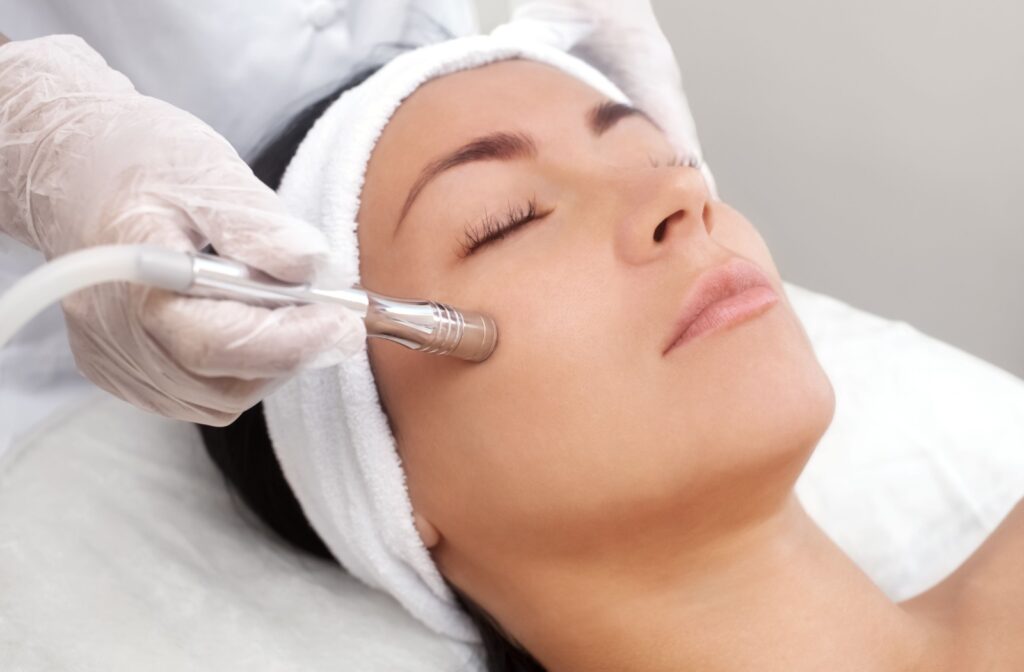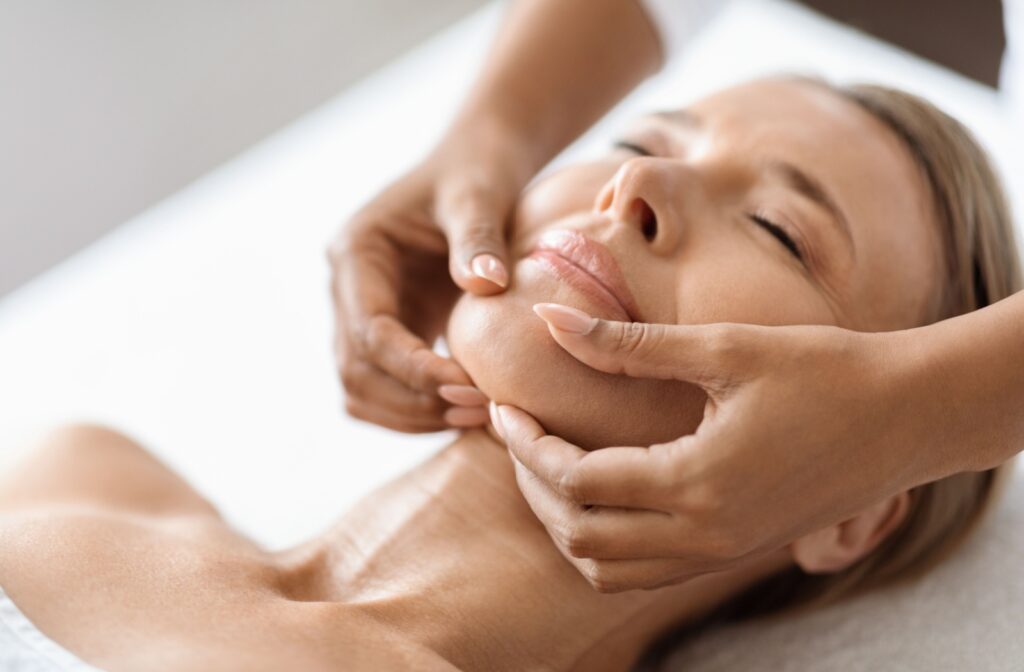Many skincare treatments offer promising, glowy, and instant results to skin concerns individuals wish to address. With so many treatment options available, it can be difficult to determine which is most suitable for your skin.
Microdermabrasion and dermaplaning are 2 skin care treatments that appear to give similar results but focus on treating different skin concerns.
While both treatments aim to gently exfoliate the skin, microdermabrasion exfoliates the skin deeper and focuses on reducing the appearance of scarring, uneven skin texture, and discoloration.
Dermaplaning can only exfoliate the top layers of skin. It helps to remove facial hair and provide a bright, smooth complexion.
What Is Microdermabrasion?
Microdermabrasion is a non-invasive procedure that exfoliates and removes the outermost layer of skin using a specialized device. It works by stimulating cellular turnover and collagen production to encourage blood flow to the skin.
Microdermabrasion can help to improve the appearance of skin conditions like:
- Wrinkles and fine lines
- Hyperpigmentation
- Uneven skin tone and texture
- Acne and acne scars
- Enlarged pores and blackheads
This is an in-office treatment, and a session can last 10 to 15 minutes, depending on the target area. Due to the noninvasive nature of the treatment, numbing the skin is often unnecessary. However, the device’s suction technology may cause some light tugging on the skin.
After every session, it’s important to keep your skin hydrated and protect it with sunscreen. Some side effects from microdermabrasion can include:
- Dry and flakey skin
- Slight bruising from the suction
- Discoloration of the treated area
- Sun sensitivity
Unfortunately, not everyone is a suitable candidate for microdermabrasion. Consult your dermatologist to determine if dermabrasion is compatible with you if you have:
- Frequent skin rashes
- Eczema or psoriasis
- Moles, freckles, or skin tags that change in shape, size, or bleed
- Are taking acne medication

What Is Dermaplaning?
Dermaplaning is a non-invasive procedure that exfoliates the skin using a surgical blade to gently scrape off the top layer of dead skin cells and vellus hairs, known as “peach fuzz,” to reveal a smoother, brighter complexion.
Dermaplaning works by promoting the growth of new skin cells while also enhancing the absorption of skincare products. By removing the uppermost layer (stratum corneum) of dead skin and hair, dermaplaning can help improve the appearance of acne scars, minor discoloration, and dull skin.
Dermaplaning helps to improve the appearance of skin by:
- Exfoliating the skin
- Removing peach fuzz
- Reducing hyperpigmentation
- Reducing acne scars
- Reducing fine lines and wrinkles
- Improving product absorption
The procedure is performed in the office and usually takes around 30 minutes. Dermaplaning involves a gentle scraping motion across the skin’s surface. It removes dead skin cells and other debris that might be making your skin look uneven.
Fortunately, there’s no required downtime after a session. However, it’s recommended to keep your skin hydrated and use sun protection after a session. After the procedure, avoid harsh skin products, including exfoliators and heavy makeup.
There are a few minor side effects from dermaplaning, which can include:
- Skin redness and slight irritation
- Breakouts
- Temporary redness
Like microdermabrasion, dermaplaning is not suitable for everyone. Dermaplaning isn’t recommended for individuals who have inflammatory skin conditions like:
- Active acne
- Rosacea
- Eczema or psoriasis
Although dermaplaning can reduce the appearance of acne scars, it is not recommended for people with active acne or frequent breakouts. The procedure is best for individuals with dry skin, dull skin, or slight facial hair.
Microdermabrasion vs. Dermaplaning
Both microdermabrasion and dermaplaning gently exfoliate the skin and aim to improve the look of the skin, but each of these treatments targets different skin conditions. The differences between the treatments include:
- Microdermabrasion uses a mechanical device that suctions dead skin cells, while dermaplaning uses a manual scalpel.
- Microdermabrasion can use different intensity levels to target delicate areas of the skin, like around the eyes, while dermaplaning can only provide one standard level of intensity.
- Dermaplaning removes peach fuzz, while microdermabrasion doesn’t help remove facial hair.
- Microdermabrasion is effective for skin conditions that benefit from deeper exfoliation, such as acne scars and hyperpigmentation. Dermaplaning only affects the top layers of your skin, so it is usually less effective than intense exfoliation treatments.
- Microdermabrasion can further penetrate the skin to improve the look of fine lines, wrinkles, age spots, acne scars, and uneven skin texture. It focuses on overall skin rejuvenation and improving skin tone and texture compared to dermaplaning’s surface-level focus.
- Microdermabrasion stimulates collagen production, improves blood flow, and enhances cell turnover to promote the growth of new skin cells and reveal fresher, smoother skin.
- Dermaplaning helps improve the absorption of skincare and makeup products by gently smoothing the skin.
Both microdermabrasion and dermaplaning offer exfoliation benefits and skin rejuvenation, but they differ in technique, targeted concerns, and how they stimulate skin renewal.
Both can show immediate results of fresh, young, bright-looking skin, but neither treatment offers permanent solutions to targeted skin conditions. Repeat sessions are required for long-lasting results.
Schedule a Consult
The choice between microdermabrasion and dermaplaning largely rests on the specific skin concerns you wish to address. Our team can help! Connect with us at Eye Lab to schedule a consultation for your skin care needs!





